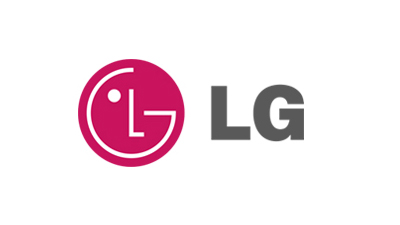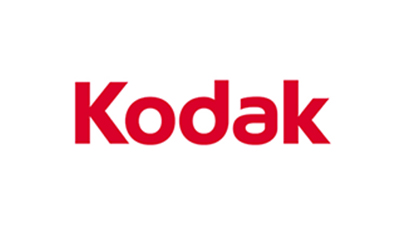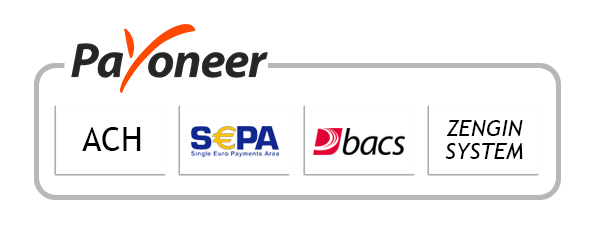
-
Report ID 138060 -
Published Date June 2023 -
Delivery Format PDF/PPT/Word -
Editor's Rating
-
Report Details
Market Overview
The generative AI in logistics market is expected to continue to grow in the coming years. The growth of this market will be driven by the increasing demand for generative AI-powered solutions in the logistics industry, the growing availability of data for training generative AI models, and the increasing investment in generative AI research and development.
The global generative AI in logistics market is expected to grow from $269.1 million in 2022 to $10,284 million by 2032, at a CAGR of 45.3%. [Please note that the numbers provided are subject to change in the actual report]
The growth of this market is being driven by a number of factors, including the increasing demand for generative AI-powered solutions in the logistics industry, the growing availability of data for training generative AI models, and the increasing investment in generative AI research and development.
Key Takeaways
The following are some key takeaways from the generative AI in logistics market:
- The market is expected to grow at a rapid pace in the coming years.
- The growth of the market is being driven by a number of factors, including the increasing demand for generative AI-powered solutions, the growing availability of data, and the increasing investment in research and development.
- The market is expected to be dominated by a few large players, but there is also an opportunity for smaller companies to enter the market.
Regional Landscape
The global generative AI in logistics market is segmented by region into North America, Europe, Asia Pacific, Latin America, and Middle East & Africa.
North America is expected to be the leading market for generative AI in logistics in the coming years. This is due to the presence of a large number of logistics companies in the region, as well as the high level of investment in research and development.
Europe is also expected to be a major market for generative AI in logistics. This is due to the increasing demand for generative AI-powered solutions in the region, as well as the growing availability of data.
Asia Pacific is expected to be the fastest-growing market for generative AI in logistics in the coming years. This is due to the rapid growth of the logistics industry in the region, as well as the increasing investment in research and development.
Market Demand and Trend
The market for generative AI in logistics is being driven by a number of factors, including:
- The increasing demand for transparency and traceability in the supply chain
- The need to improve efficiency and reduce costs
- The need to meet the demands of e-commerce and omnichannel retailing
- The need to comply with regulations such as the General Data Protection Regulation (GDPR)
Here are some of the benefits of using generative AI in logistics:
- Increased efficiency: Generative AI can help logistics companies to automate tasks, improve decision-making, and reduce costs.
- Improved customer service: Generative AI can help logistics companies to provide customers with more accurate information about the status of their orders and to deliver their orders more quickly and efficiently.
- Reduced environmental impact: Generative AI can help logistics companies to reduce their environmental impact by optimizing their transportation routes and by reducing the amount of waste they produce.
Some obstacles to the continued growth
Despite the many potential benefits of generative AI in logistics, there are some obstacles to the continued growth of the market. These obstacles include:
- The high cost of developing and deploying generative AI solutions
- The lack of skilled workers with the necessary expertise in generative AI
- The regulatory challenges associated with the use of generative AI
Here are some specific examples of how generative AI is being used in logistics:
- Route optimization: Generative AI can be used to create models of the real world that can be used to simulate different routing scenarios. This can help logistics companies to find the most efficient routes for their deliveries.
- Inventory management: Generative AI can be used to forecast demand and optimize inventory levels. This can help logistics companies to avoid stockouts and to reduce carrying costs.
- Warehouse management: Generative AI can be used to optimize warehouse layout and improve the efficiency of picking and packing operations.
- Transportation planning: Generative AI can be used to optimize transportation routes and improve the efficiency of fleet management.
- Customer service: Generative AI can be used to provide customers with more accurate information about the status of their orders and to deliver their orders more quickly and efficiently.
Technological Advancements
Generative AI is a rapidly developing field, and there are a number of technological advancements that are driving its adoption in the logistics market. These include:
- The increasing availability of data: The logistics industry generates a massive amount of data, which can be used to train generative AI models.
- The development of new machine learning algorithms: Machine learning algorithms are becoming more powerful and efficient, making it possible to train generative AI models on larger and more complex datasets.
- The development of new hardware: New hardware, such as GPUs and cloud computing, is making it possible to train and deploy generative AI models at scale.
Market Dynamics
Drivers
There are a number of drivers that are fueling the growth of the generative AI in logistics market. These include:
- The increasing demand for transparency and traceability in the supply chain: Generative AI can be used to create digital twins of physical assets, which can provide real-time insights into the status of the supply chain.
- The need to improve efficiency and reduce costs: Generative AI can be used to optimize logistics operations, such as route planning, inventory management, and demand forecasting.
- The need to improve customer service: Generative AI can be used to personalize customer experiences, such as by providing recommendations for products or services.
Restraints
There are a number of restraints that are limiting the growth of the generative AI in logistics market. These include:
- The high cost of implementing generative AI solutions: Generative AI solutions can be expensive to develop and deploy.
- The lack of skilled workers: There is a shortage of skilled workers who can develop and deploy generative AI solutions.
- The lack of standards: There are no industry standards for generative AI solutions, which can make it difficult for organizations to choose the right solution.
Opportunities
The generative AI in logistics market is expected to grow significantly in the coming years. This growth will be driven by a number of factors, including:
- The increasing adoption of digital technologies by logistics companies: Logistics companies are increasingly adopting digital technologies, such as cloud computing, big data, and machine learning. This is creating opportunities for generative AI solutions.
- The growing demand for sustainable logistics solutions: There is a growing demand for sustainable logistics solutions, which can be enabled by generative AI. For example, generative AI can be used to optimize transportation routes, which can reduce fuel consumption and emissions.
- The increasing demand for personalized customer experiences: Customers are increasingly demanding personalized customer experiences. Generative AI can be used to personalize customer experiences, such as by providing recommendations for products or services.
Challenges
Generative AI in logistics market faces a number of challenges, including:
- The lack of trust in AI: There is some level of distrust in AI among some stakeholders in the logistics industry. This distrust can be a barrier to the adoption of generative AI solutions.
- The lack of data: The lack of data can be a barrier to the development and deployment of generative AI solutions.
- The complexity of generative AI solutions: Generative AI solutions can be complex, which can make them difficult to develop, deploy, and use.
The top key players in the generative AI market for logistics include:
- Microsoft
- IBM
- AWS
- Meta
- Adobe
- OpenAI
- Insilico Medicine
- Simplified
- Genie AI
Market Segmentation
By Applications
- Warehouse optimization
- Fleet management
- Supply chain management
Recent Developments
Here are some recent developments in the generative AI in logistics market:
- In 2022, IBM acquired SXIQ, a company that specializes in generative AI for logistics. This acquisition will help IBM to expand its generative AI capabilities and offer more solutions to its customers in the logistics industry.
- In 2022, Amazon announced that it is using generative AI to improve its warehouse operations. The company is using generative AI to create virtual models of its warehouses, which helps it to identify potential problems and optimize its operations.
- In 2022, DHL announced that it is using generative AI to improve its delivery planning. The company is using generative AI to create predictive models of customer demand, which helps it to plan its deliveries more efficiently.
-
Table Of Content
Research Insights & Deliverables
 Development and Future Forecast
Development and Future Forecast Competitive benchmarking
Competitive benchmarking Company Revenue Statistics
Company Revenue Statistics Rising Regional Opportunities
Rising Regional Opportunities Technology Trends and Dynamics
Technology Trends and Dynamics Technology Assessment
Technology Assessment
-
Inquiry Before Buying
Research Insights & Deliverables
 Development and Future Forecast
Development and Future Forecast Competitive benchmarking
Competitive benchmarking Company Revenue Statistics
Company Revenue Statistics Rising Regional Opportunities
Rising Regional Opportunities Technology Trends and Dynamics
Technology Trends and Dynamics Technology Assessment
Technology Assessment
-
Request Sample
Research Insights & Deliverables
 Development and Future Forecast
Development and Future Forecast Competitive benchmarking
Competitive benchmarking Company Revenue Statistics
Company Revenue Statistics Rising Regional Opportunities
Rising Regional Opportunities Technology Trends and Dynamics
Technology Trends and Dynamics Technology Assessment
Technology Assessment














